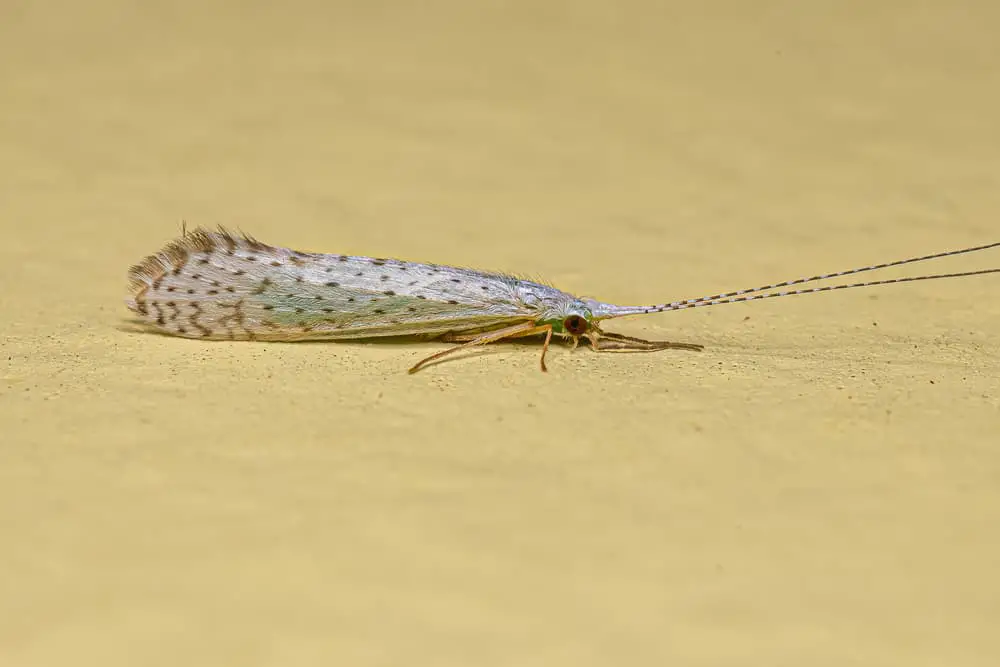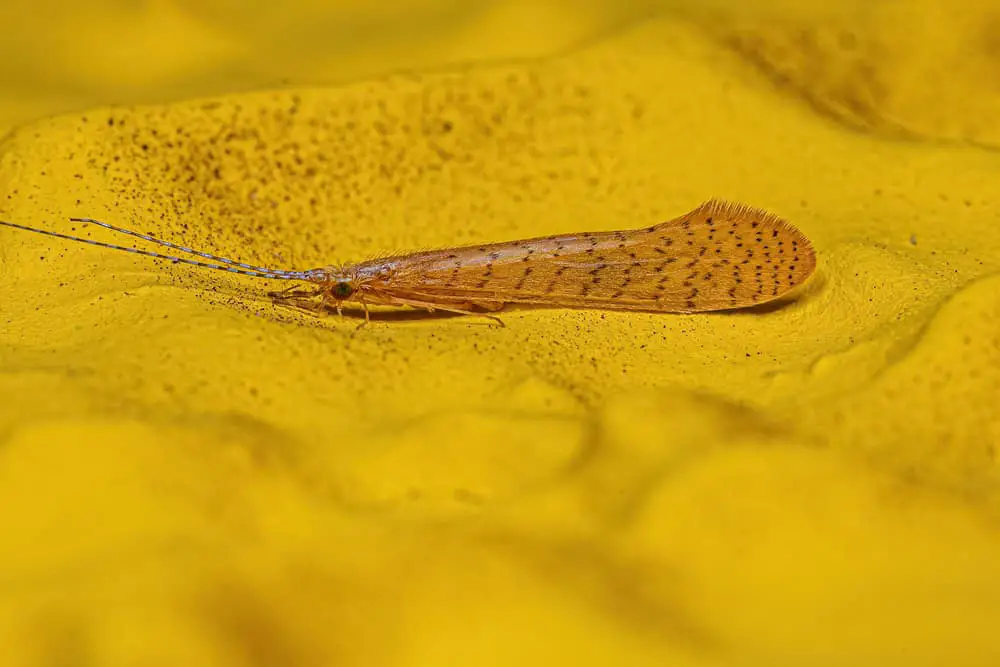Living near bodies of water tends to attract all kinds of insects and bugs. It seems like aquatic insects multiply so much faster than terrestrial bugs and can overrun your yard in no time. An aquatic ecosystem is a busy place, and there are some insects that can be quite a nuisance to have around, especially if they swarm.
Mosquitos and flies that bite are common around bodies of water, and a lot of pest control efforts go into stopping them since they inflict pain and spread disease. But insects like adult caddisflies don’t bite or sting. They just show up in mass and buzz around your home. If it is caddisfly season and you live near freshwater sources, you will want to check out the information below to prevent a full-scale invasion of these unwanted pests.
What are Caddisflies?
Caddisflies are not quite flies and not exactly moths, but they share characteristics of both. These 1/2 inch to 1 inch long, pale brown to tan, thin insects look just like moths and have the suffix fly in their name but are really their own species known as Trichoptera. They have two sets of wings instead of the one pair of wings that flies have, and their bodies and hairy wings and texture resemble the features of a moth.
Caddisfly populations are the greatest near stagnant water where the caddisfly larva live. Adult caddisflies stay close to the water as it is where they breed and house the source of food for their offspring. Female caddisflies build a fortress for baby caddisflies using twigs, rocks, sand, and other detritus material. Outdoor lights can lead these nuisance insects away from the water and near your home, where it’s possible they could slip inside.
The real threat of these moth-like insects is that fully-fledged adults can have a mass emergence if there were fewer predators of the caddisfly larva, and a caddisfly infestation can be really frustrating. If a swarm of these unwanted pests gets into your home, it will be difficult to get them back out, and action will need to be taken.
Bugs That Look Like Caddisflies
Caddisfly swarms are annoying, but they make good food for predators and are a vital part of the freshwater food chain. While other bugs will bite and sting, an emergence of caddisfly is not very harmful and likely will help the local aquatic population. Don’t accidentally kill caddisfly, a favorite food for trout, by mistaking them for other more nefarious insects.
| Bug | Similar Features | Habitat |
| Moth | Hairy-textured wings | On land and near outdoor lights |
| Butterfly | Long thin body, light-colored wings | In Gardens and near flowerbeds |
| Black Soldier Fly | Long body, no mouthpiece | Near compost and other decaying food sources |
| Water Wasp | Long body, 2 pairs of wings | Live near clean water and bodies of similar water quality |
Moth
The entire body of a moth resembles a caddisfly, and they swarm towards outdoor lighting similarly as well. It is usual for there to be way more caddisflies than moths if they are the actual insects you see, but a multitude of insects are attracted to lights so you will need to check closely to be sure. If you live near water, then chances are caddisflies are hanging around near your exterior lights.
Butterfly
Butterflies have similarly shaped bodies, and some of the wings and colors can be the same as caddisflies. However, it is pretty easy to tell a butterfly from a caddisfly if you know what to look for. Butterflies do not swarm and tend to be much more solitary when hunting for pollen. Caddisflies have pale brown bodies, whereas most butterflies usually have darker-colored abdomens.
Black Soldier Fly
Although not the same color, when zipping around, these insects have a similar shape and size to caddisflies. These actually are flies and not their own species, and black soldier flies are more likely to be near compost than bodies of water. Just like caddisflies, the adult BSF do not have mouth parts for eating and use their few adult days to mate and breed to end a complete life cycle.
Water Wasp
Wasps that live near fresh water can be mistaken for caddisflies. They have a similar quality of life, mainly hanging around the water, feeding, and mating. Water wasps can come in all shapes, sizes, and colors. with some looking strikingly like caddisflies. They are also solitary creatures and do not typically swarm unless a nest or hive is disturbed, so they can be spotted that way as well.
How To Remove Caddisflies from Your Home and Lawn?

Caddisflies around water outdoors will be almost impossible to remove completely. They are not harmful and serve a valuable role in the local ecosystem. As long as there are no external lights to attract them, they should leave you alone. Occasionally, however, Caddisflies will swell in number and swarm, and then the sheer number of them can be an issue.
If a large number of caddisflies are drawn to your exterior lights, there is a greater chance some will make it into your home. It is okay if caddisflies enter your home, but you will need to decide what you are going to do. An adult fly will only live for 4 days or so, meaning if ignore them, they will all die off very shortly.
Not everyone is okay with insects of any type inside their home and will want to resort to faster removal steps. For complete control, spray any insecticide for flying insects, preferably a non-toxic one, in the direction of the caddisflies. Once they have been knocked down and killed, vacuum up the corpses, and the infestation should be eliminated. If only all pest problems were so easy to handle

